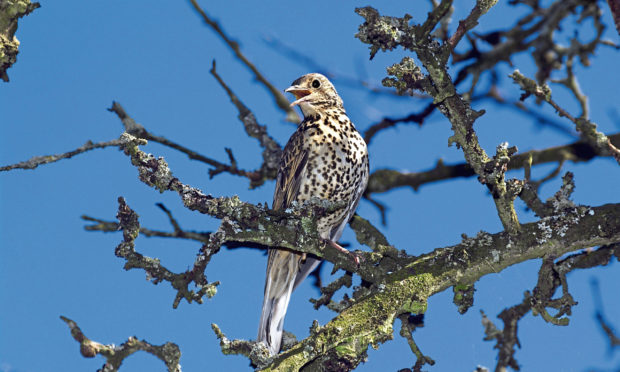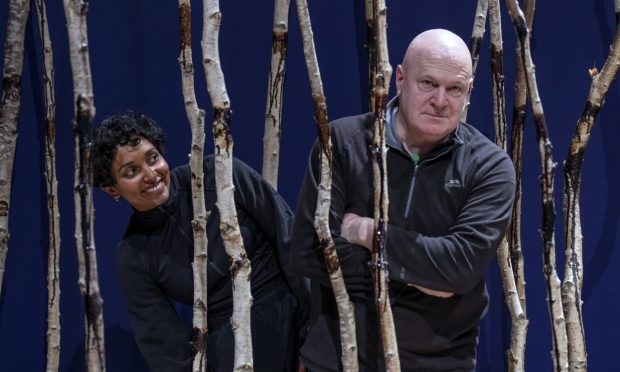I believe I may have found the antidote. It’s not a vaccine. You don’t have to be injected and it doesn’t involve quarantine. It’s also free and perfectly legal. Too good to be true, I hear you cry. Someone else would have thought of it by now.
Well, lots of people have come close, and newspapers, magazines, radio and television have been telling us almost from day one of lockdown mark one that nature is good for you, so go for a walk in the park, as if that was the be-all-and-end-all of nature.
Why not try a piece of woodland instead? You don’t need to own the woodland, you just have to be able to visit it, or even get close to it. Part of the problem of lockdown mark two is that it has coincided with winter and the longer winter has gone on the more winter-fatigue has compounded coviditus, which, although it doesn’t appear in any medical dictionary, is nevertheless what we are all suffering from whether we have had the actual thing or not.
But my antidote only works at the end of winter, just when nature is thinking about spring, scratching its head and trying to decide if it’s time yet. While it’s making up its mind, it throws in a secret ingredient. We’ve all known about it before, we’ve all been familiar with it for years during February. But I for one just didn’t see the need for it as an antidote before.
So here’s how I discovered it.
The journey to discovery
There was a drystane dyke that cut uphill from the loch to a wooded crag. Up near the crag the dyke was taller and more intact, whereas lower down it wore the forlorn expression of the redundant and disregarded. Higher up, then, it offered a better backrest and shelter, and as it happened I was looking for both because my backpack offered a coffee flask and biscuits.
The sound of an unseen waterfall rushed into the void left by silenced footsteps. This is the kind of situation my writing has fed off for more than 30 years now. The fall cut down through the crag but it was hidden by trees, so I pieced the nature of its presence together from the sound of its voice, the many sounds of its many voices.
Then, quite unannounced, the unambiguous voice of spring crept into the mix, and as if from far off, but it couldn’t possibly have been far off. It infiltrated the predominance of the waterfall even though it was much quieter, yet because its pitch was much higher and piercing and occasionally strident, it found ways through the sound-screen of the falls.
Harbinger of spring
It was a mistle thrush. Somewhere above the fall, high in the crag’s highest trees, a mistle thrush sang. Had it just begun, or had it been singing all along and it had taken time for me to tune in to the song of those changed surroundings? The song reached me in short, staccato phrases, often tapering away to short silences, one diminuendo after another, and further fragmented because from time to time the falls drowned it out.
But listen.
If you like your harbingers of spring well-toned, jazzily inventive and far-carrying, perhaps accompanied by coffee al fresco, and if you are willing to turn a blind eye to the occasional patch of snow that has yet to succumb to the thaw, then there on that late February late afternoon, were the first syllables of spring.
The singer was an un-mated male. And while it’s true that you can sometimes hear him on a fine afternoon of late December or any time in January, those are moments of overture. But this, this was song for the sake of the song, an advertisement of his own availability, yes, but also an outpouring of intent, a declaration that winter is lost and irretrievable now. It was nothing less than the first day of mistle thrush spring.
To be of the land
The mood of that moment suffused. It permeated hillside and drystane dyke. It cut through tree, crag, waterfall, thrush, song. The process of grafting on to nature’s late afternoon slowly crept beyond mind, beyond senses, became physical, became bodily, became wellbeing.
The thing is to be of the land, to breathe in unison with it, to keep its peace.
On and on the thrush.
On and on the waterfall.
Every morning just now, whenever I step out of the house to walk one of three possible routes that constitute my daily lockdown exercise, I hear the mistle thrush sing.
Each of the routes is by three scraps of woodland and each has a singing thrush. That thrush-and-waterfall combination is the better part of 20 miles away, but mistle thrush song is the anthem of our winter-into-spring days.
When you hear one, stand still, give it the time of day. Behold the antidote.










